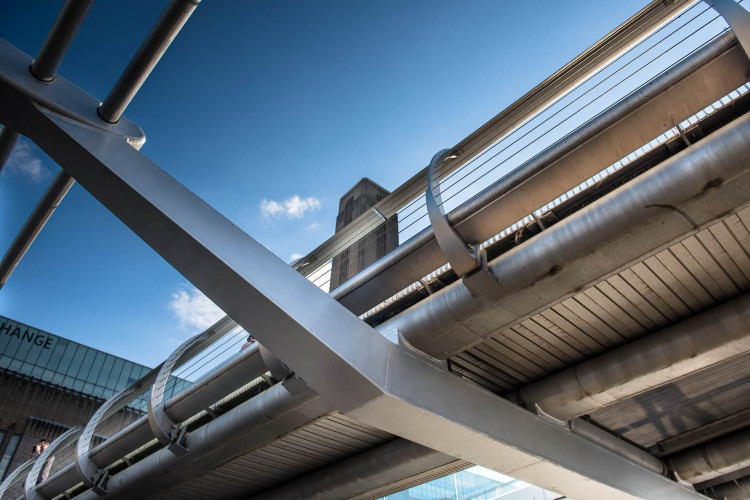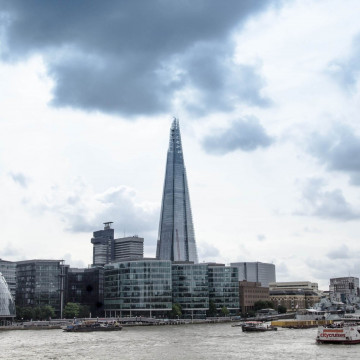Millennium Bridge in London (United Kingdom) - pedestrian bridge design Foster and Partners
Where is located Millennium Bridge?
Address of Millennium Bridge is London, United Kingdom
show on map
When was built Millennium Bridge?
Built date of Millennium Bridge is 1998-2000

Facts, informations and history of Millennium Bridge
The Milenium Bridge is designed exclusively for pedestrians, it hangs over the Tamiza River connecting the Bankside district with the City of London.
The three main bridge spans, respectively 81, 144 and 108 meters are supported by 8 ropes. These ropes are able to resist the force of 2 thousand tons.
The width of the bridge is 4 meters, and its height at the highest point reaches 13 meters.
The design of the bridge was made by Foster and Partners, it was selected from among 227 works from around the world and 6 final works. The sculpture was taken care of by Sir Anthony Caro, and the construction by Ove Arup Engineering. It is also worth mentioning that the steel structures of the bridge were made in many parts of Europe, including the Polish company Mostostal Zabrze.
The opening of the facility took place on June 10, 2000, however, due to the excessive vibration caused by a large number of pedestrians, the third day was decided to close the bridge. The reopening took place on February 22, 2002, after its final reconstruction worth over £ 5m.
On the first day of opening the bridge exceeded 90,000 people, there were around 2000 pedestrians at all times.
The bridge was not closed due to design errors, and under the influence of the phenomenon called "collective synchronization", it occurred because the walking people unknowingly synchronized their steps, which caused that the footbridge she began to vibrate at the same frequency as their steps, terrified people accelerated, increasing resonance.
During the Kyrill storm on January 18, 2007, the bridge was temporarily closed for fear of passers-by who, under the influence of strong winds, could be "blown away" into the water.
The lighting system has been "embedded" into the structure of the bridge, it is activated by photocells at dusk creating a "blade of light".
Architect of Millennium Bridge

Construction/building type
Building Millennium Bridge is of type Suspension bridge
A suspension bridge is a type of bridge structure in which the main load-bearing element is ropes or chains attached to supports and supporting the girders or deck. It is a popular type of bridge, used worldwide for its efficiency and strength. Here is some information about suspension bridges, their precursors and the most famous structures of this type.... czytaj więcej.
Architectural style
Architectural style of Millennium Bridge is Modern High-Tech
Modern High-Tech is an architectural style that originated in the 1970s and is characterised by the use of modern technology and materials in construction. Buildings in this style tend to be austere and evocative, with facades covered in futuristic lines and shapes. ... czytaj więcej.
Other dimensions, parameters and frequently asked questions

How many meters have Millennium Bridge?
Millennium Bridge have length 325 meters
What material is the building made of?
Millennium Bridge is made of the following materials: Steel, aluminum
Cost
Build cost of Millennium Bridge is £ 18,2m
Other names
The building is also known by other common names or in the original language, i.e. Most milenijny, London Millennium Footbridge (oficjalna nazwa), Wobbly Bridge
Official website
The official website of the building, where up-to-date information can be found, is http://www.londonmillenniumbridge.com
Photo gallery Add photo
Location on map / How to get there





























Comments to Millennium Bridge (1) Average rating: 5 Add comment / Rate building
Based on 1 comment